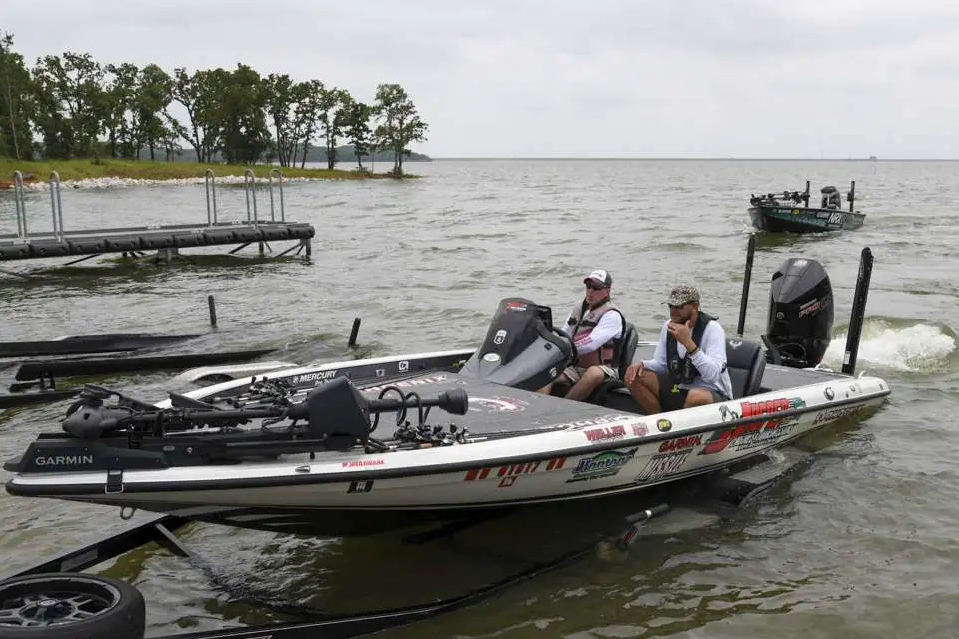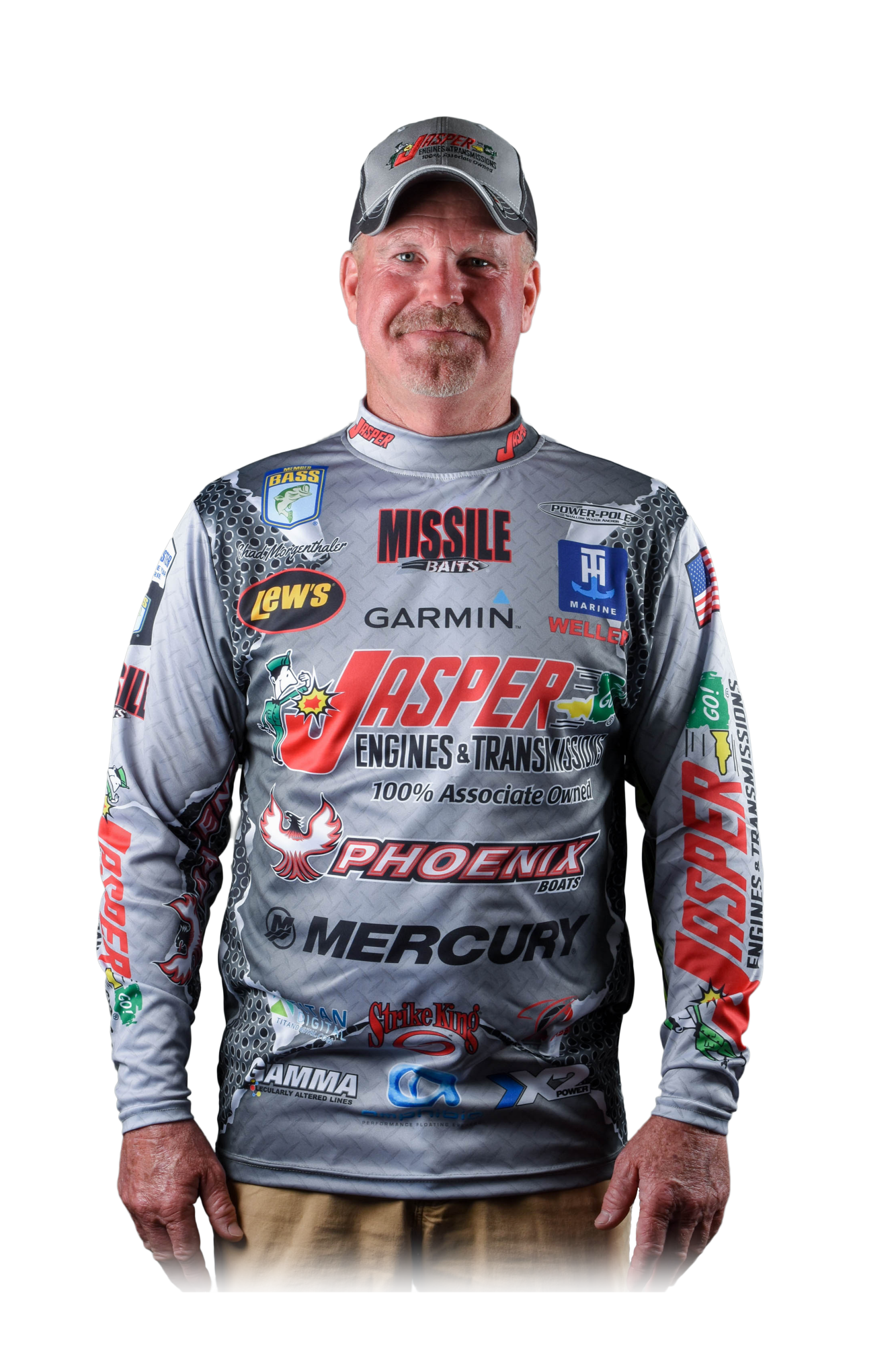
Many professional anglers seem to have faulty memories. We remember things the way that we want to remember them, or memories are colored by our later experiences, not necessarily the way that they actually happened. I know that I do it myself, and not just because I’m over 50.
In order to learn from both our successes and our failures, we have to be honest with ourselves. Before the Bassmaster Elite Series event at Santee Cooper I decided to try something new – I was going to write down my thoughts both before and after the tournament so that there was no “fudge factor.” I had to live with what I’d written before competition started.
Here’s what I wrote on the Wednesday “off day” before the tournament started:
The water temperature has decreased 10 degrees since we got here, and after 2 1/2 days of sunshine, it’s absolutely pouring today and expected to be cloudy tomorrow. It’s springtime and the fish want to be shallow to spawn, but I honestly don’t know how this mixed up weather is going to affect the angling.
In order to protect myself, I came up with a two-pronged plan: finding staging fish on cypress trees and sight fishing. After all, it’s a full moon. On top of all of the changes, I’m concerned because three practice days isn’t all that much for a system this huge. By the time I figured out navigation and water clarities and where there is vegetation, that took up almost two days. Things have changed a lot over the years, and there’s a lot of good looking water to weed out.
I figure I’ll start on the cypress trees and try to dial in whether it’ll be all soft plastics or whether they’ll eat a moving bait, and if so, which one. It’s a guessing game, and one bad decision can put you behind the eight ball. Even if you catch them one day, I don’t have the history here to know which areas will replenish, and how quickly. The biggest thing is to avoid fishing too fast and to avoid spinning out. It’s critical to keep any anxiety under control. That’s not so easy when the Bassmaster Classic, Bassmaster Angler of the Year and Elite requalification are on the line. Not to mention, diesel is pushing $6 a gallon too.
The wild card here is the day off. I love the fact that the fish are unmolested. I also like the time to prepare my tackle, which is critical when I’ll need to have lots of rods on the deck. Then again, things are changing so fast that my mind is spinning every moment I’m not on the water. One thing I do know is that I’m going to have to catch big bags to do well. I think it’ll take 18 pounds a day (36 total) to get a check, and 55 pounds to make the Top 10.
And my post-tournament summary:
I finished 13th at Santee Cooper, just 1 pound, 9 ounces out of the Top 10. I’m not going to lie. That stung a little. My prediction about getting a check (36 pounds vs. the 33 it took) was a little high, but I underestimated the weight to make the Top 10 – 64-plus, not 55. On the other hand, it was a tournament where my strategy paid off handsomely, and I learned as the event went on. That’s evident from the fact that my weights went up every day – from 16-14 on Day 1, to 20-08 on Day 2 and finally 25-14 on Day 3.
I stuck to my two-part plan, but just knowing what they should be doing doesn’t necessarily equate to success. I had to make constant small decisions that greatly impacted my success.
On the first day, I started in the back of Jack’s Creek and was disappointed to find out that Wednesday’s rain had blown it out. Nevertheless, I got there early enough that there was one clean edge, and I plucked a lone 4-pounder. Then I went up to the Swamp. The water there had completely changed colors, but it was coming up. After a slow start there, I was tempted to leave but instead of doing that I moved super-shallow and found the fish. I quickly dialed them in and caught one after another. Unfortunately, I just couldn’t get a big bite. I had 14 or 15 pounds when I made one last stop on an outside tree and caught another good one to cull up to my final weight.
The next good decision came on the morning of the second day. I swapped the order of my stops. That may seem insignificant, but catching a quick limit in the Swamp settled my nerves. At noon I moved back to Jack’s and culled almost all of them out, fishing a small area I’d been watching that others missed. Then, once again I made a last stop before check-in and caught a 5-pounder from an isolated tree on my last pitch.
Heading into Day 3, I was in 25th place with nothing to lose, and another day of rising temperatures pulling my fish toward me. That gave me the courage to abandon my northern places and head to new water where I caught them all day long. I’d go a little ways in one small area, catch two or three, then move again and do the same thing every 15 or 20 minutes. Most of them came sight fishing, but a few were staging on trees, including one of the bigger fish.
In addition to being willing to throw out the areas that had been good to me, I also made some key tackle adjustments. I’d been throwing a Missile Baits 6 1/2-inch Quiver on a 3/16-ounce weight with 12-pound line. These fish, despite being plentiful, were skittish. They wouldn’t cooperate. When I switched to a 4-inch Watermelon Candy Quiver on a 1/8-ounce shaky head, the light switch flipped. I could stay further away, and I ended up catching every one that I could see. The first cypress tree I hit had three bass on it, including a 6 1/2 and a 4.
Recap of the recap:
So did my pre-tournament analysis help me out? I think it did. I had my best Elite Series event in a while. Yes, I had the fish on to make the Top 10 – a 5- or 6-pounder that bit a weightless Senko on the end of a long cast and caught me off guard. That one would have put me over the top. At the same time, it was the only bite I lost all tournament that I felt like I should have landed.
By writing down my thoughts ahead of time, I was able to focus on what I thought it would take to do well – both in terms of weight and strategy. Most importantly, I slowed down and never spun out. That doesn’t mean I didn’t cover ground. As you read above, I fished several different main areas over the three days of competition. But when I was in an area with fish, or working on a single fish, I never got in a hurry. I stayed focused on the job ahead of me. It’s a good lesson heading into Chickamauga with some momentum.

